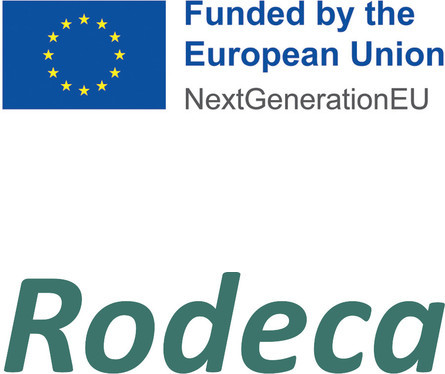Project Description
The role of the Devene fault for safe and efficient geological carbon storage
Rodeca
The Rodeka project is an initiative to assess the fault parameters that are necessary for site selecting, designing and operating a geological storage of carbon dioxide in Northwestern Bulgaria. The project is investment No. BG-RRP-2.011-0010 of the Bulgaria's recovery and resilience plan and is implemented within the framework of procedure BG-RRP-2.011 Financing of research projects in the field of green and digital technologies from investment C2.I2 “Increasing of the innovation capacity of the Bulgarian Academy of Sciences in the field of green and digital technologies”.
Motivation
The process of injecting greenhouse emissions into boreholes results in an increase in pore pressure in the subsurface layers. The high pressure may trigger hazards such as uncontrolled leakage of greenhouse emissions into the atmosphere and induced seismicity. Faults are the factor that directly affects the propagation and spatial distribution of the injected fluid. The Rodeca project provides geological data for the Devene fault, which are necessary to optimize the site selection for geological repositories of carbon dioxide in Northwestern Bulgaria. Fault parameters are necessary during the exploration and exploitation stage when industrial risks are managed.
Target
The Rodeca project aims to provide the data needed to reduce the risks associated with an seismogenic fault to help industry and energy successfully implement environmentally safe and socially acceptable underground storage of carbon dioxide.
-
Green transition
-
Knowledge transfer
-
Open Science
-
Strengthening the research potential of Bulgarian Academy of Sciences
Impact
-
Enterprises that implement the green industry policy will be supported in the implementation of geological carbon storage projects.
-
The results will enhance further seismic hazard assessments.
-
The results will be useful for future research on dating past earthquakes and fault slip rates through paleoseismic techniques.
This page has been produced with the financial assistance of the European Union–NextGenerationEU. All responsibility for the content of this page is borne by the Geological Institute of the Bulgarian Academy of Sciences, and the views expressed herein can in no way be taken to reflect the official opinion of the European Union and the Bulgarian Academy of Sciences.
 Please do not print this page unless absolutely necessary.
Please do not print this page unless absolutely necessary.
Period: 2024 - 2026
